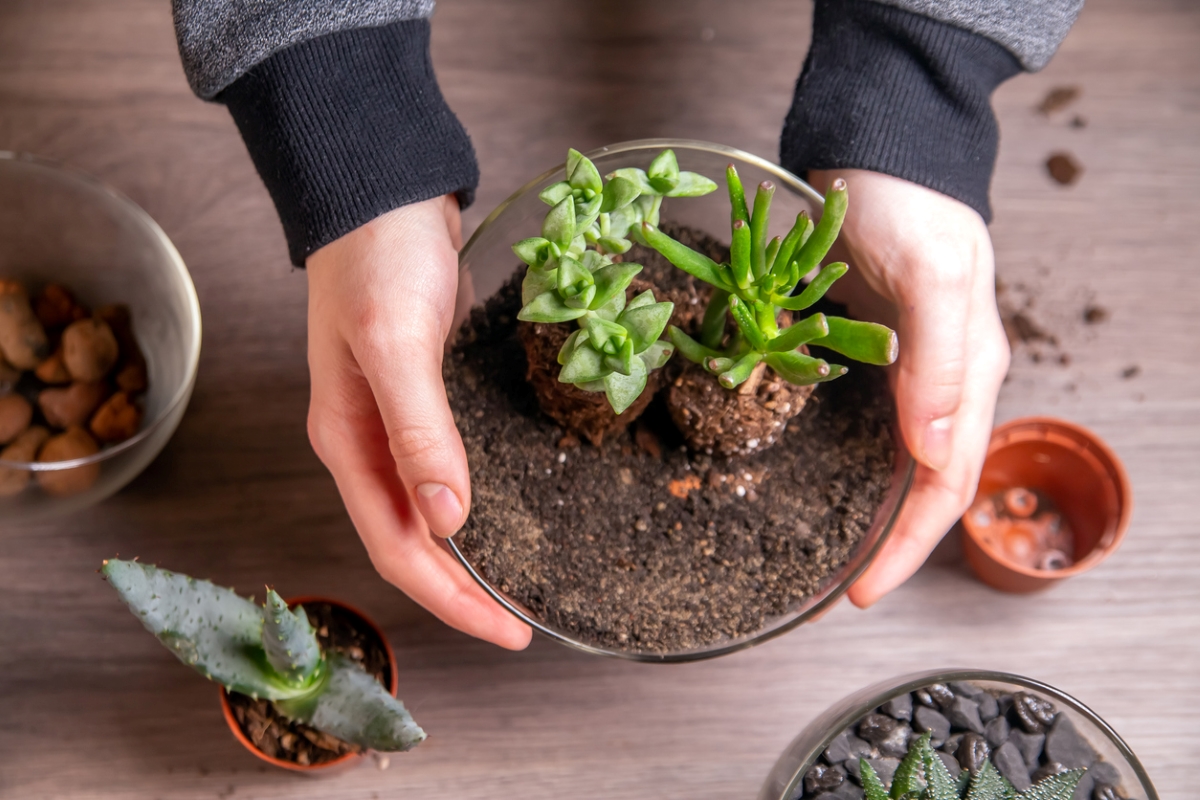

We may earn revenue from the products available on this page and participate in affiliate programs. Learn More ›
Derived from 19th-century glass Wardian cases that were once lashed to the decks of ships to keep plants alive on long sea voyages, closed terrariums became popular for keeping humidity-loving plants such as ferns alive indoors too. These days, however, open terrariums often contain miniature landscapes composed of succulents and cacti instead.
Therefore, the best terrarium plants will vary depending on whether the terrarium is a more humid, closed type or the drier open variety. For such an indoor garden project, it’s best to opt for short, slow-growing species to create a terrarium that can continue making a scene for years.
Closed-Terrarium Plants
Closed terrariums are those in which plants and their soil are entirely enclosed in glass so that no outside air reaches them. They still can “breathe” under such conditions since they convert carbon dioxide into oxygen through photosynthesis. Closed terrarium plants should be humidity-loving species that can thrive without direct sun, as these containers must be kept out of such rays to prevent excessive heat from building up inside the glass.
RELATED: 11 Indoor Gardening Projects Absolutely Anyone Can Do
1. Club Moss (Selaginella kraussiana)
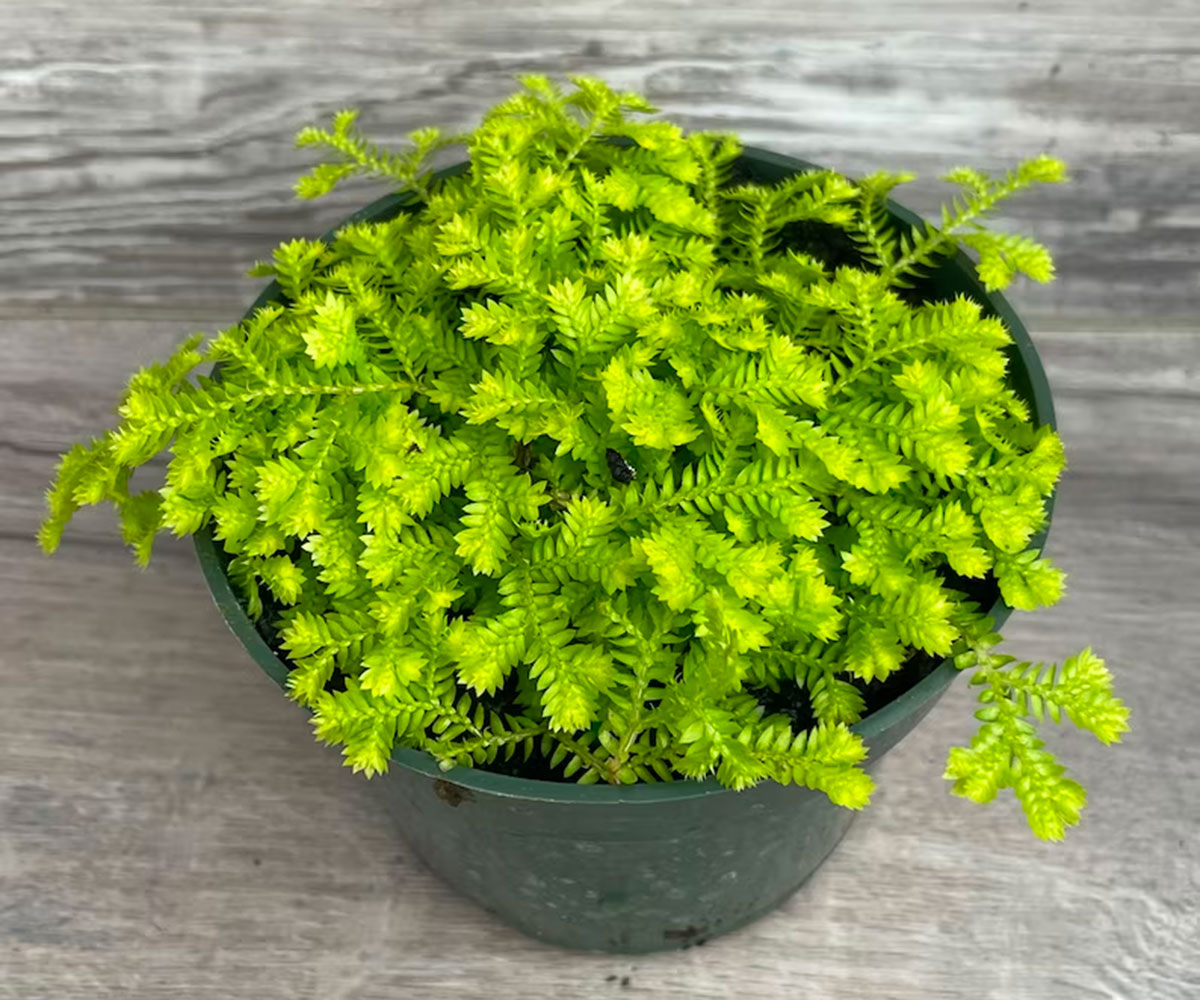
This shallow-rooted moss makes a plush carpet in terrariums since it seldom grows taller than 2 to 4 inches, though it can spread to 18 inches across. One of the low-light terrarium plants, it prefers shade. Plants like this that grow inside closed containers seldom require watering but should receive lukewarm water when they do need moisture to prevent shocking them.
Key characteristics: Grows 2 to 4 inches tall and up to 18 inches wide, and has green, ferny foliage
Basic care: Bright indirect light, moist soil; provide balanced plant food once per month from spring through fall
2. Creeping Fig (Ficus pumila)
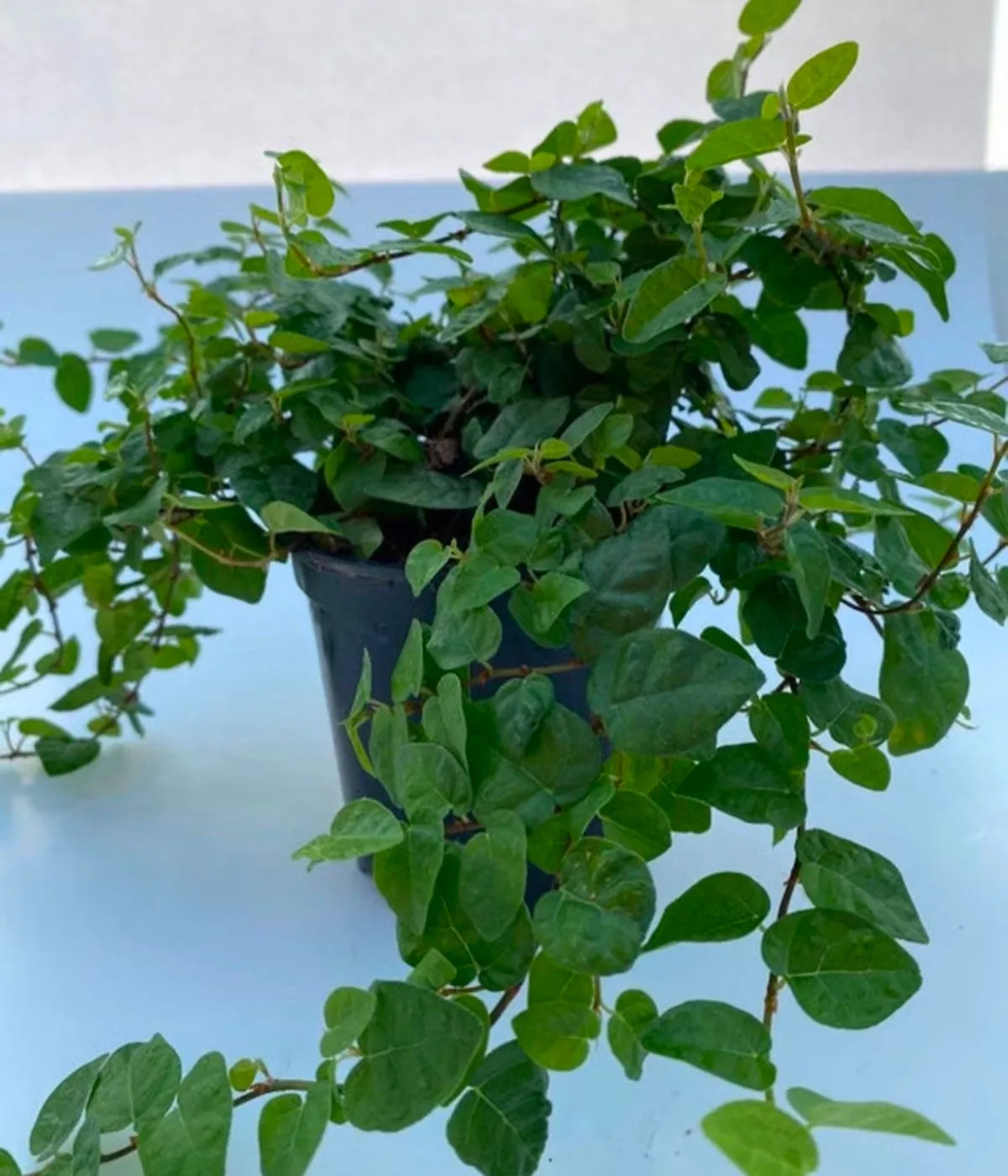
With small leaves in its juvenile stage, a creeping habit, and an ability to tolerate low light, this fig adapts well to terrariums. Just keep in mind that it may also try to attach itself to the glass with the same “holdfasts” it uses to climb walls outdoors, but all terrarium plants should be cut back enough that they don’t touch the glass. Cultivars of creeping fig include the variegated Snowflake and especially tiny-leafed Minima.
Key characteristics: Grows 2 inches tall as a ground cover and can climb 1 foot per year when grown outdoors. It features small green or variegated heart-shaped or oak-like leaves
Basic care: Bright indirect light, moist soil; provide balanced plant food once per month in spring and summer
3. Earth Star (Cryptanthus spp.)
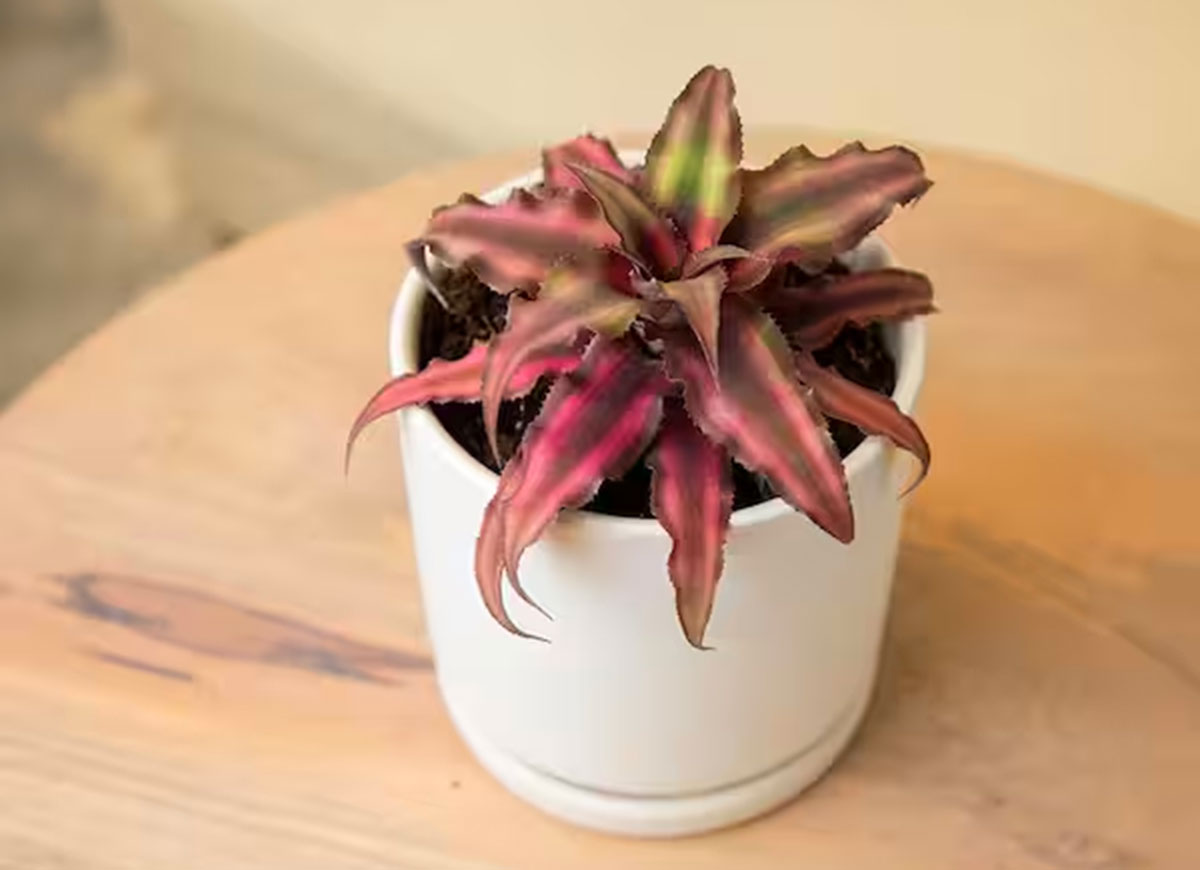
Bitty bromeliads, seldom growing wider than 6 inches or taller than 5 inches, these star-shaped and humidity-loving shower plants add sparkle to a terrarium with the bright colors of pink- or red-striped cultivars such as C. bivittatus ‘Ruby Star’. Their insignificant flowers often remain hidden, and each original plant will die after it blooms to give space to its offsets.
Key characteristics: Grows up to 5 inches tall and 6 inches wide in a star-shaped rosette; its leaves often striped with pink or red
Basic care: Bright indirect light or partial sun, moist soil; spray with balanced plant food at half strength once per month in spring and summer
4. Dwarf Caladium (Caladium humboldtii ‘Mini White’)
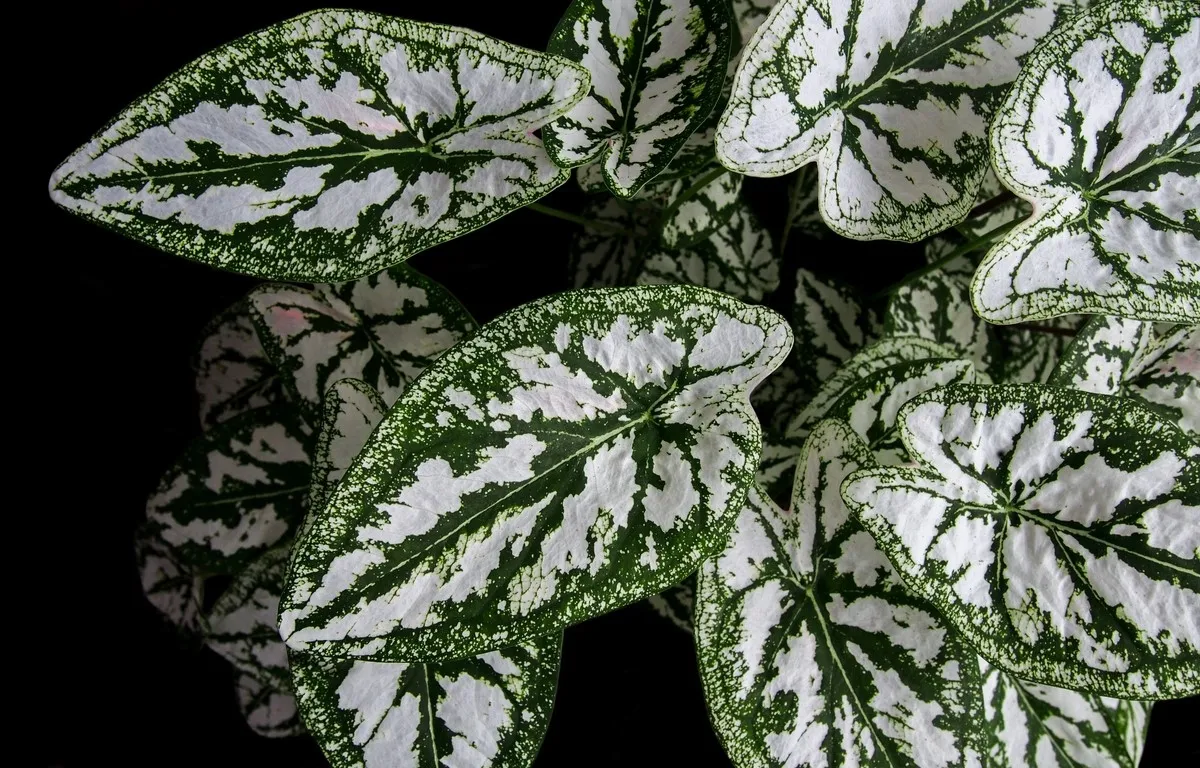
Among miniature plants for terrariums is this curtailed caladium that seldom grows taller than 9 inches. It has heart-shaped green leaves lavishly marked with white variegation, which causes it to stand out in a terrarium’s shady interior. Caladiums typically die back to the ground during winter and resprout in spring. Make sure the soil in their container isn’t soggy as they grow from tubers, which can rot if kept too wet.
Key characteristics: Grows up to 9 inches tall with heart-shaped green leaves marked by white variegation
Basic care: Bright indirect light, moist soil; provide high-nitrogen plant food once per month in spring and summer
5. Dwarf Maidenhair Fern (Adiantum microphyllum ‘Little Lady’)
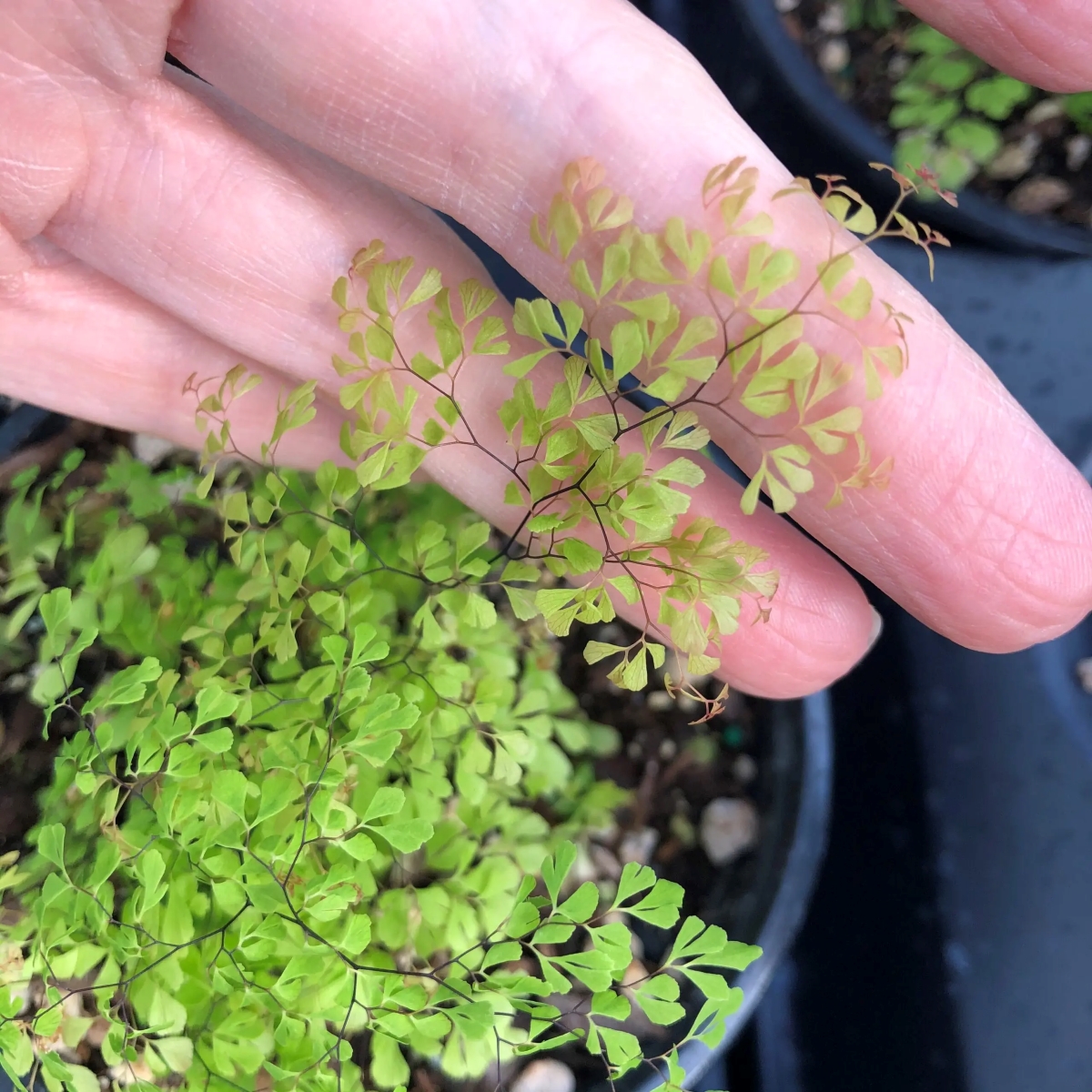
Otherwise notoriously difficult to grow indoors due to their high humidity requirements, maidenhairs definitely make good terrarium plants. However, you will want to choose a petite cultivar such as this little lady dressed in pale green frilly flounces with contrasting black stems. Avoid spraying its delicate foliage with insecticides, though, as these can be lady-killers!
Key characteristics: Grows to 1 foot tall with frilly light-green foliage and black stems
Basic care: Filtered sun or bright indirect light, moist soil; provide balanced plant food at half strength once per month in spring and summer
RELATED: This Purple Houseplant Is the First New Genus to Be Introduced in Decades—And You Can Get it Now
6. Lemon Button Fern (Nephrolepis cordifolia ‘Duffii’)

When asked about her favorite closed-terrarium plant, Tovah Martin, author of The New Terrarium, replied that she would like to “give a shout-out to Nephrolepis cordifolia ‘Duffii’, which I love because this fern remains compact and creates a wonderful vertical element in a terrarium, plus it loves the high humidity.” This lemon button fern also emits a citrus-like fragrance.
Key characteristics: Grows to 1 foot tall with green, ferny, lemon-scented foliage
Basic care: Filtered sun or bright indirect light, moist soil; provide balanced plant food at half strength once per month in spring and summer
7. Nerve Plant (Fittonia albivenis)
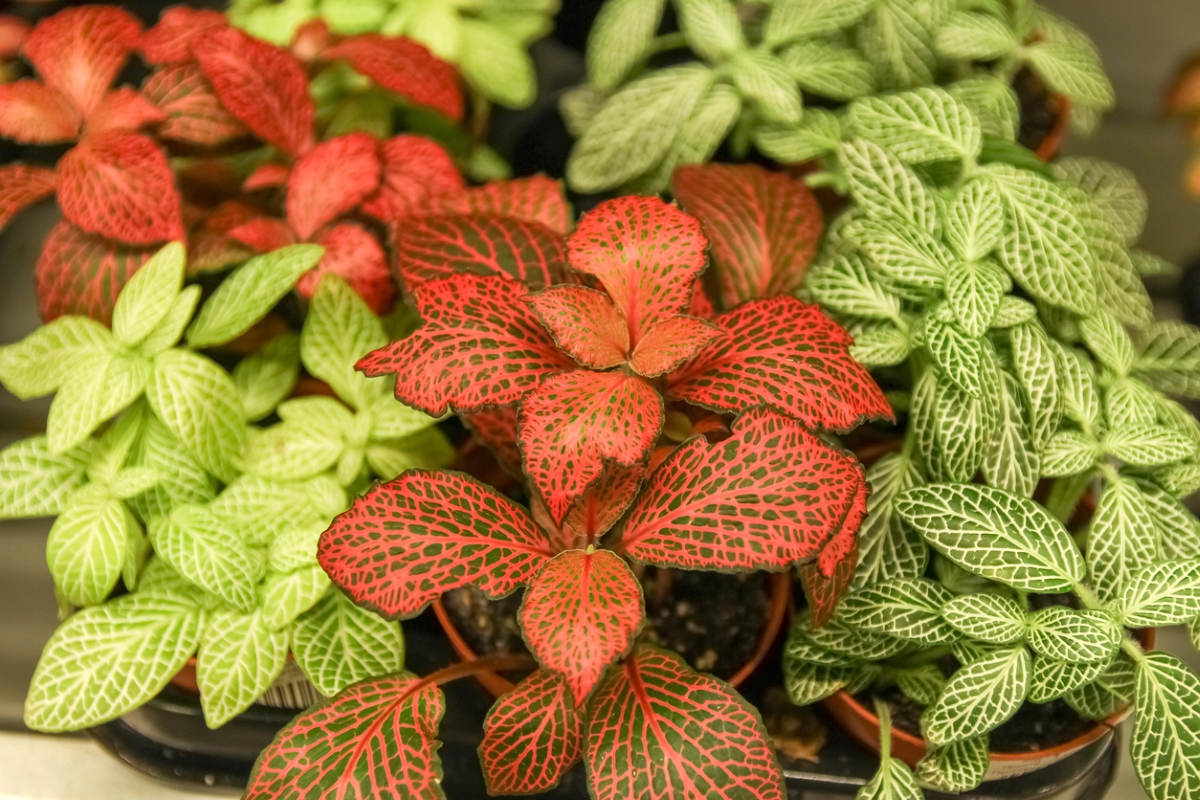
With its oval, dark green leaves intricately veined with white, pink, or red, the nerve plant prefers the same humid conditions that ferns do and coexists well with them. That moisture will help prevent the fainting fits it throws if allowed to dry out. The plant typically doesn’t grow taller than 6 inches but may “have the nerve” to spread twice that wide.
Key characteristics: Grows to 6 inches tall and 12 inches wide with oval white, pink, or red- veined dark green leaves
Basic care: Bright indirect light, moist soil; provide balanced plant food monthly in spring and summer
Open-Terrarium Plants
Open terrariums “break the glass ceiling,” having openings in their tops or sides so that air is admitted at all times. In them, the glass is mainly for decorative value since it doesn’t retain as much humidity. Open terrariums typically are planted with short cacti or succulents such as the following species, though other small plants that don’t require high humidity should work as well. Don’t include the species below in closed terrariums, which may cause them to rot.
1. Air Plant (Tillandsia spp.)

Peculiar plants that don’t require planting, tillandsia rosettes survive on moisture and nutrients absorbed through their gray or green leaves. You will need to mist air plants in a terrarium occasionally. Martin notes that in an open terrarium, “Tillandsia xerographica looks like a curly sea urchin with silver felted leaves. It needs no soil whatsoever and looks absolutely otherworldly in glass.” Opt for a seedling size for small terrariums.
Key characteristics: Grows rosettes up to 8 inches, 2 to 4 inches high in others, with gray or gray-green leaves
Basic care: Bright indirect light, spray with water twice a week; apply high-phosphorous spray-on plant food at half strength once every 2 weeks in spring and summer
2. Burro’s Tail (Sedum morganianum ‘Burrito’)
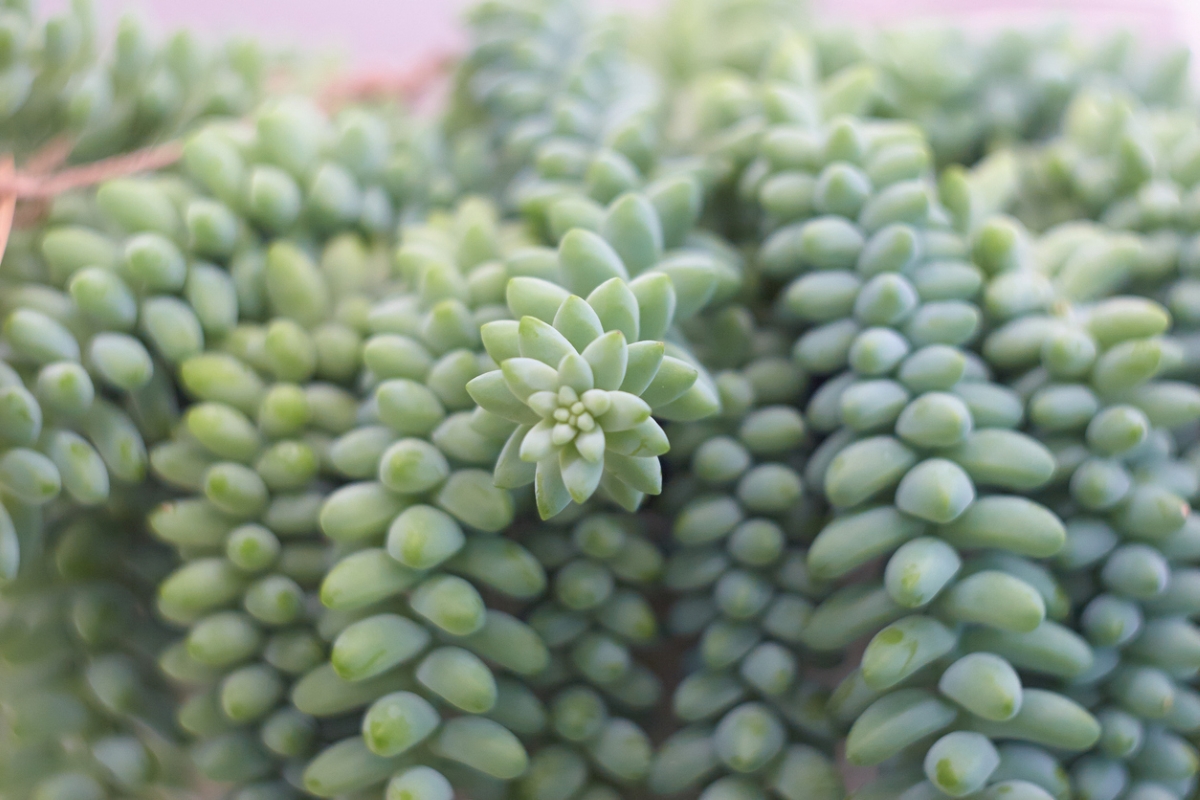
Although this trailing succulent with plump silver-green leaves spiraling around its stems can grow to 48 inches, you can keep its tails cropped to a more reasonable length as it dangles over the side of a terrarium planter. Burro’s tail does tend to shed some of those appendages when bumped, so place it where it isn’t likely to get jostled.
Key characteristics: Grows (trails) to 4 feet with spiraling silver-green leaves
Basic care: Bright indirect light; water when dry in summer, less often in winter; provide balanced plant food once per month in spring and summer
3. Ghost Plant (Graptopetalum paraguayense)
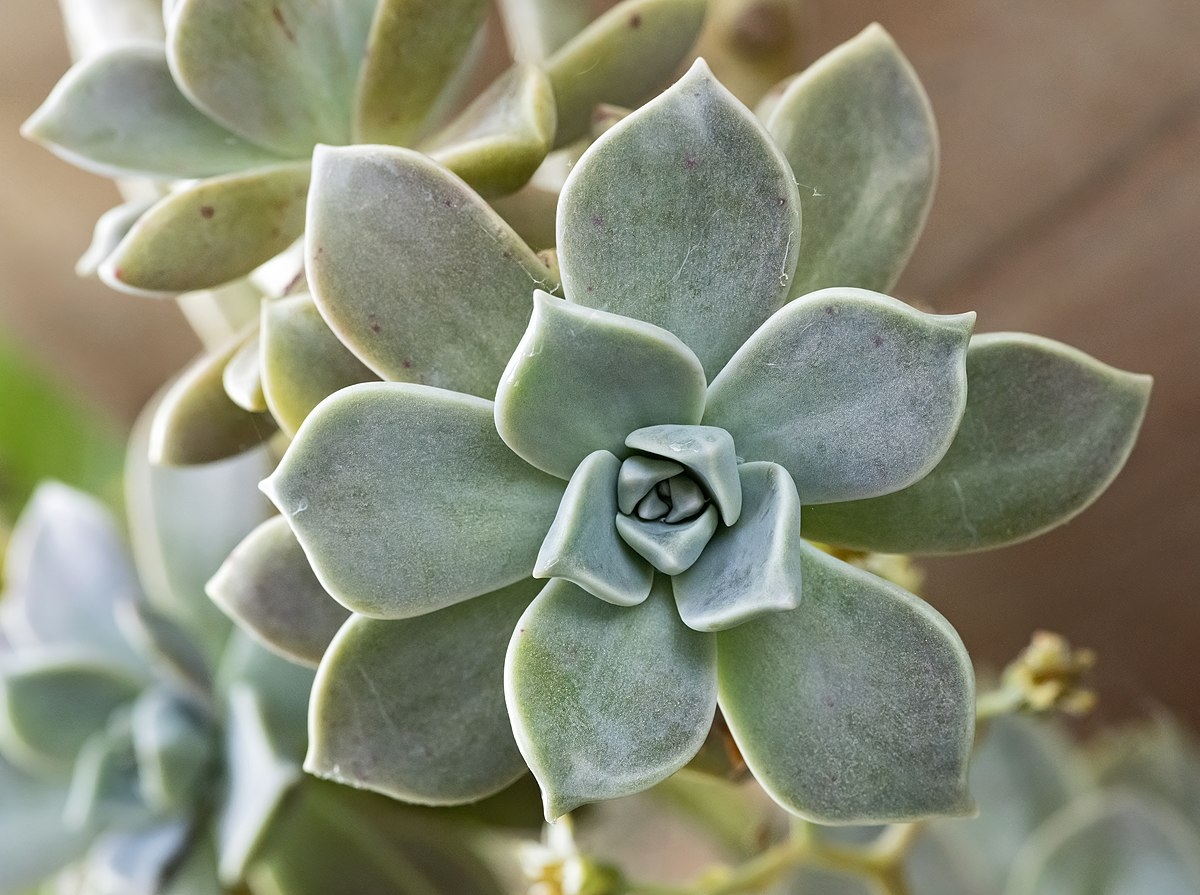
This plant derives its spooky name from the greenish-white pallor of its 3- to 6-inch rosettes. According to North Carolina State Extension, its leaves “become pink-tinged in hot dry weather and blueish in partial shade” when the plant is grown outdoors. Those same colors appear under either bright or dim conditions indoors. As with many succulents, ghost plant’s growth slows during its summer dormant period.
Key characteristics: Grows rosettes 3 to 6 inches across with greenish-white, pink, or blue-tinged leaves; plant can reach 1 foot tall
Basic care: Full or partial sun, allow to dry out between waterings; provide balanced plant food at half strength once per month in spring and summer
4. Hen and Chicks (Echeveria spp.)
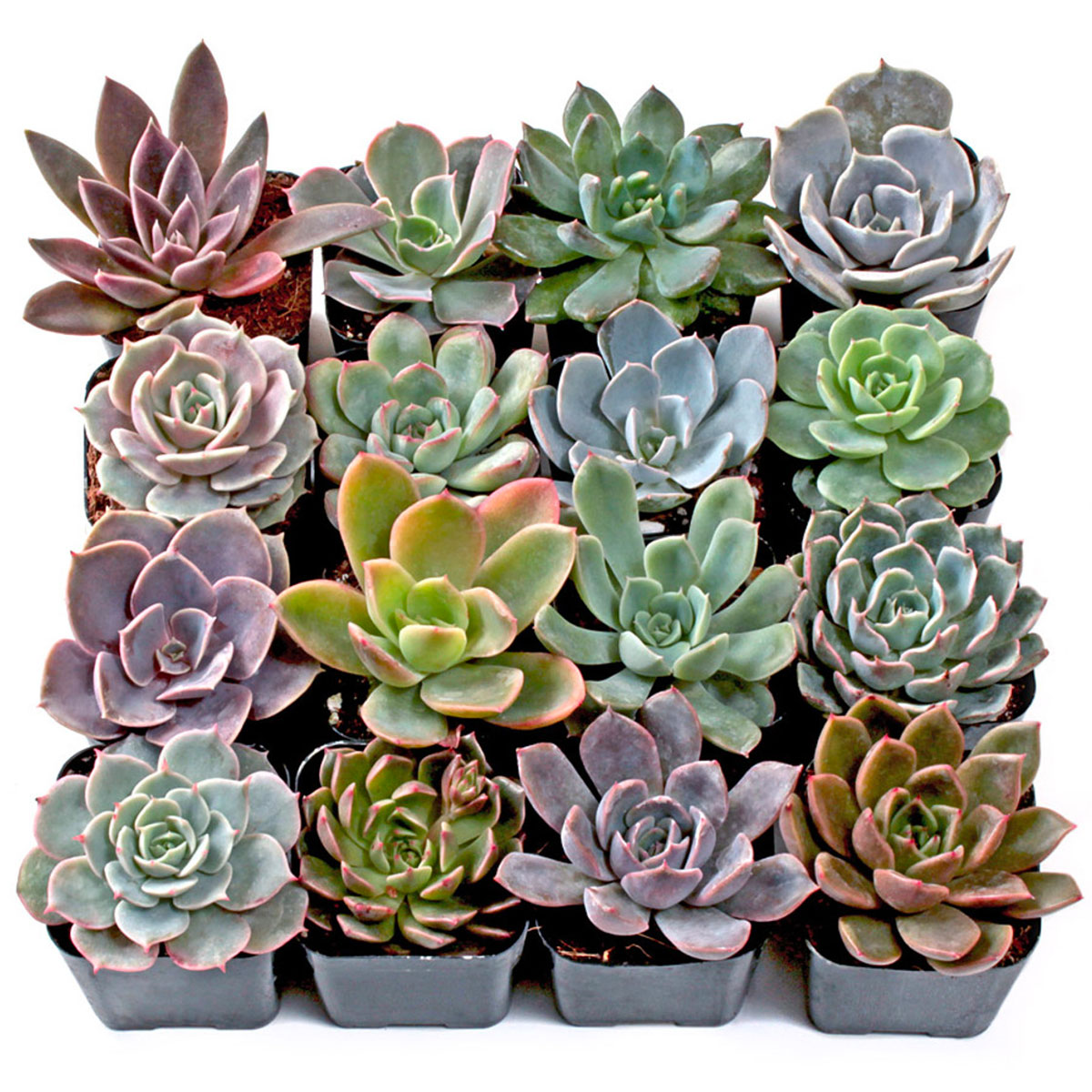
Similar in appearance to the outdoor hen and chicks (Sempervivum spp.), echeverias produce plumper, red-tinged green rosettes 2 to 6 inches across more adapted to a constantly warm indoor “climate,” making them better plants for terrarium use. Leave a little space around each so that it can produce its “chicks,” which are smaller versions of itself.
Key characteristics: Grows red-tinged green rosettes 2 to 6 inches across
Basic care: Partial sun, moist soil in summer and dryer soil in winter; provide high-phosphorus plant food at half strength every 2 weeks from spring through fall
RELATED: 9 Surprising Things You Can Make with Light Bulbs
5. Haworthia (Haworthia spp.)
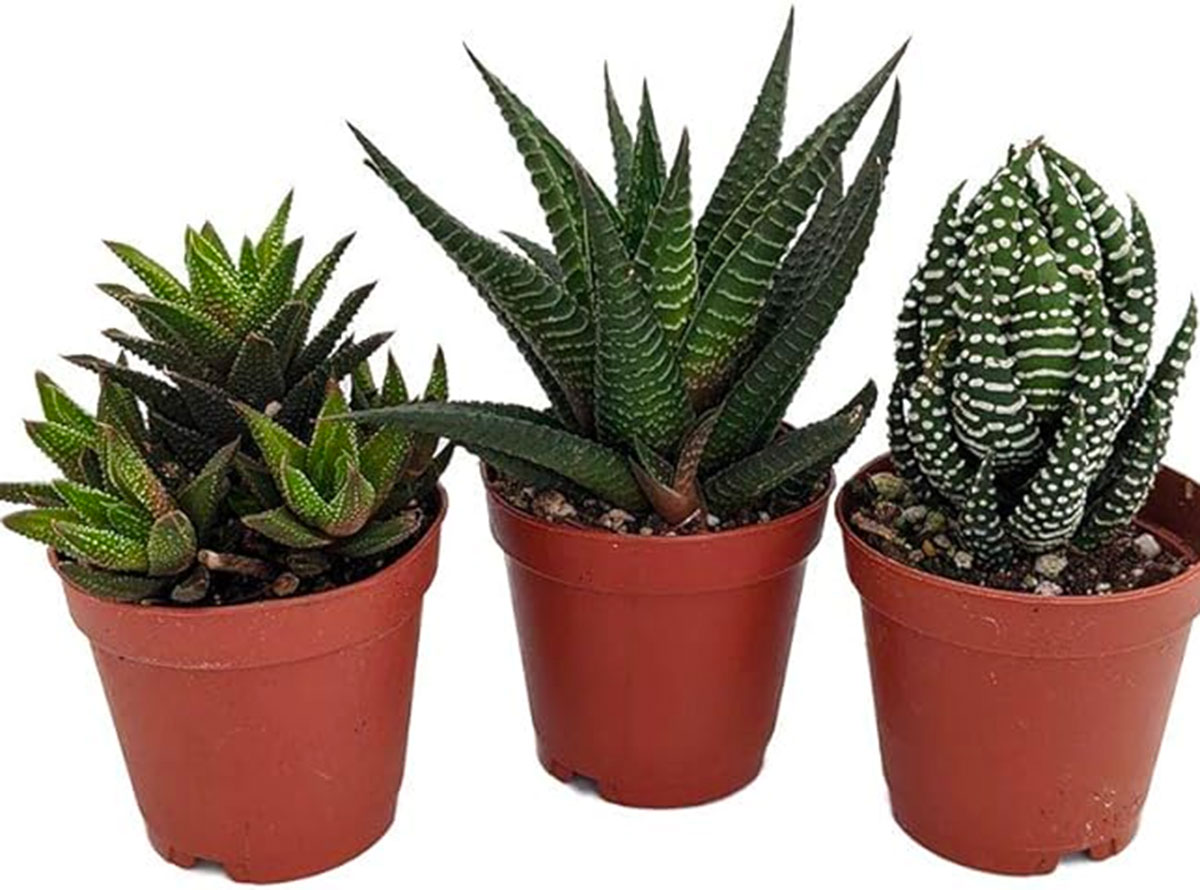
Among the most undemanding of small terrarium plants, haworthias typically don’t grow much taller than 3 to 5 inches. Their rosettes of frequently spiky foliage often are decorated with stripes of white tubercles, but haworthias vary widely in appearance according to species. Most, however, can get by on minimal care.
Key characteristics: Grows from 3 to 5 inches tall, often with white-striped rosettes of green foliage
Basic care: Bright indirect light; allow to dry out between waterings and provide balanced houseplant fertilizer at half strength once per month in spring and summer
6. Dwarf Jade Plant (Crassula ovata ‘Minima’)
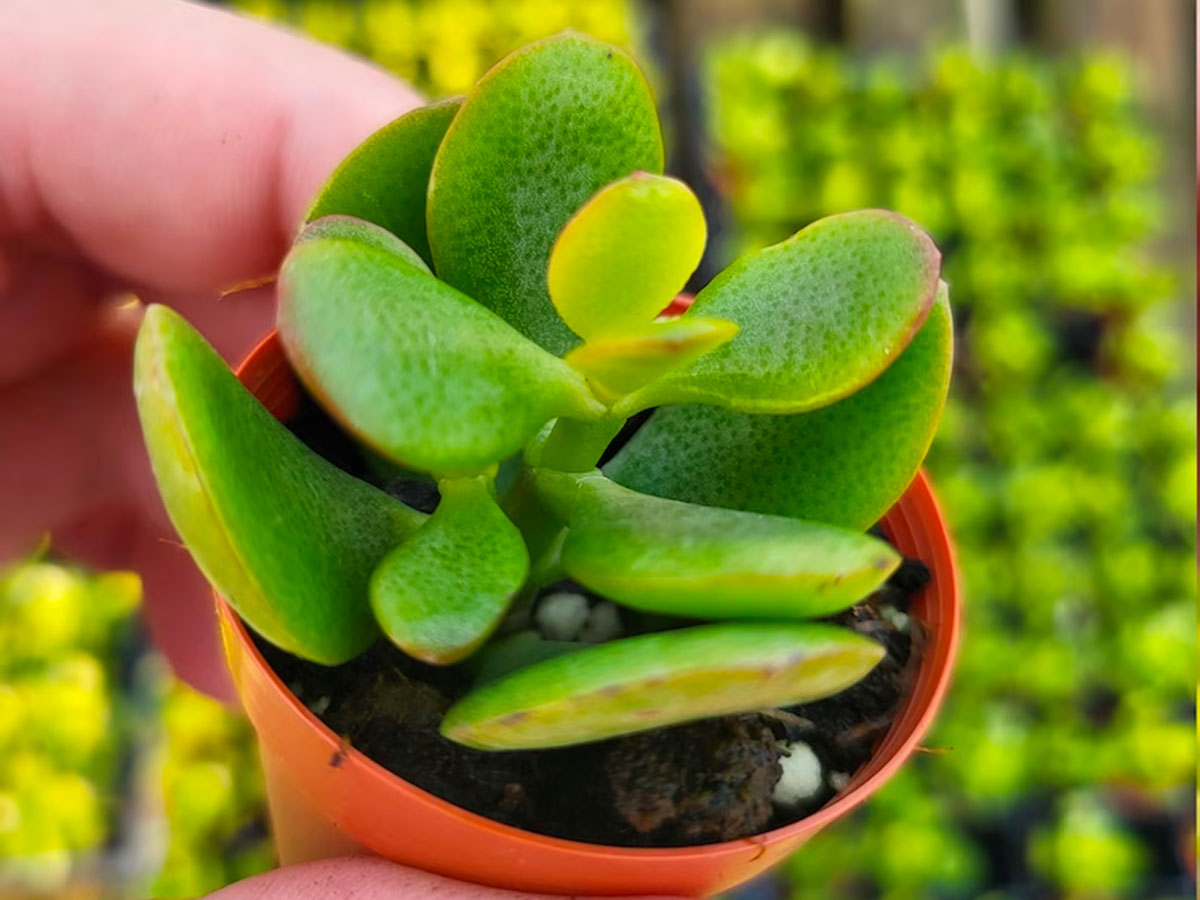
This miniature version of the jade plant grows relatively tall with time but can be kept cut back to more petite proportions so that it resembles a tiny tree with succulent green, often red-edged leaves. Those contrast nicely with the more silvery foliage of other succulents in a glass plant terrarium.
Key characteristics: Grows to 30 inches tall and 20 inches wide with plump, red-edged green leaves
Basic care: Filtered sun; allow to dry out between waterings and provide balanced plant food at half strength every 2 weeks in spring through fall
7. Tiger’s Jaw (Faucaria tigrina)
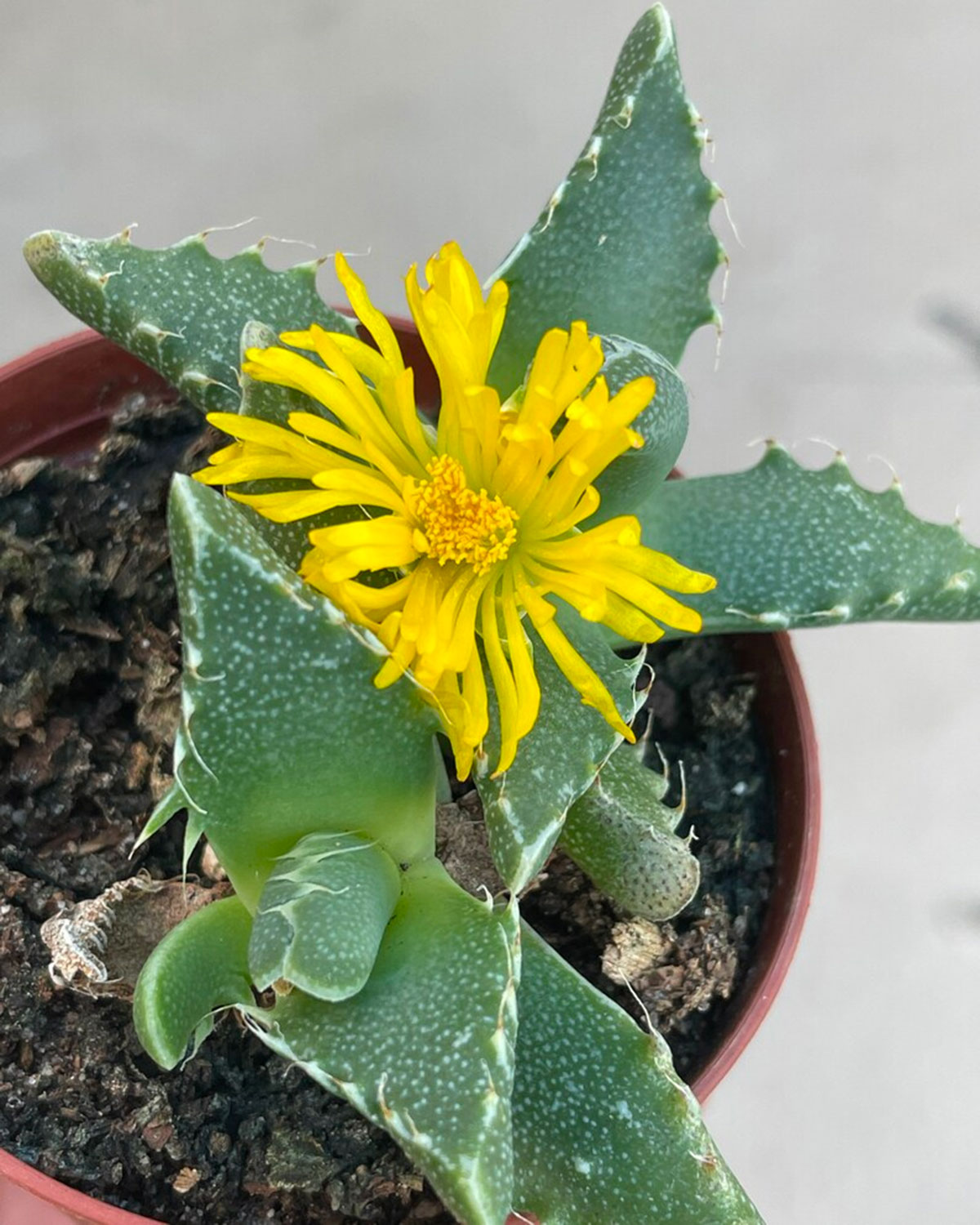
This plant grows no taller than 6 inches with a rosette of green or sometimes orange- or purple-tinted, white-spotted triangular leaves. Those are edged with spines, the soft “teeth” of the tiger. Tiger’s jaw sometimes produces 2-inch spidery yellow blooms in fall and winter when their sunny hues will be most appreciated
Key characteristics: Grows to 6 inches with orange- or purple-tinted triangular and white-spotted green leaves, produces 2-inch spidery yellow flowers in fall and winter
Basic care: Partial sun from spring through fall, full sun in winter; moist soil in spring and summer, drier in fall and winter; provide high-phosphorus plant food once per month from spring through fall
